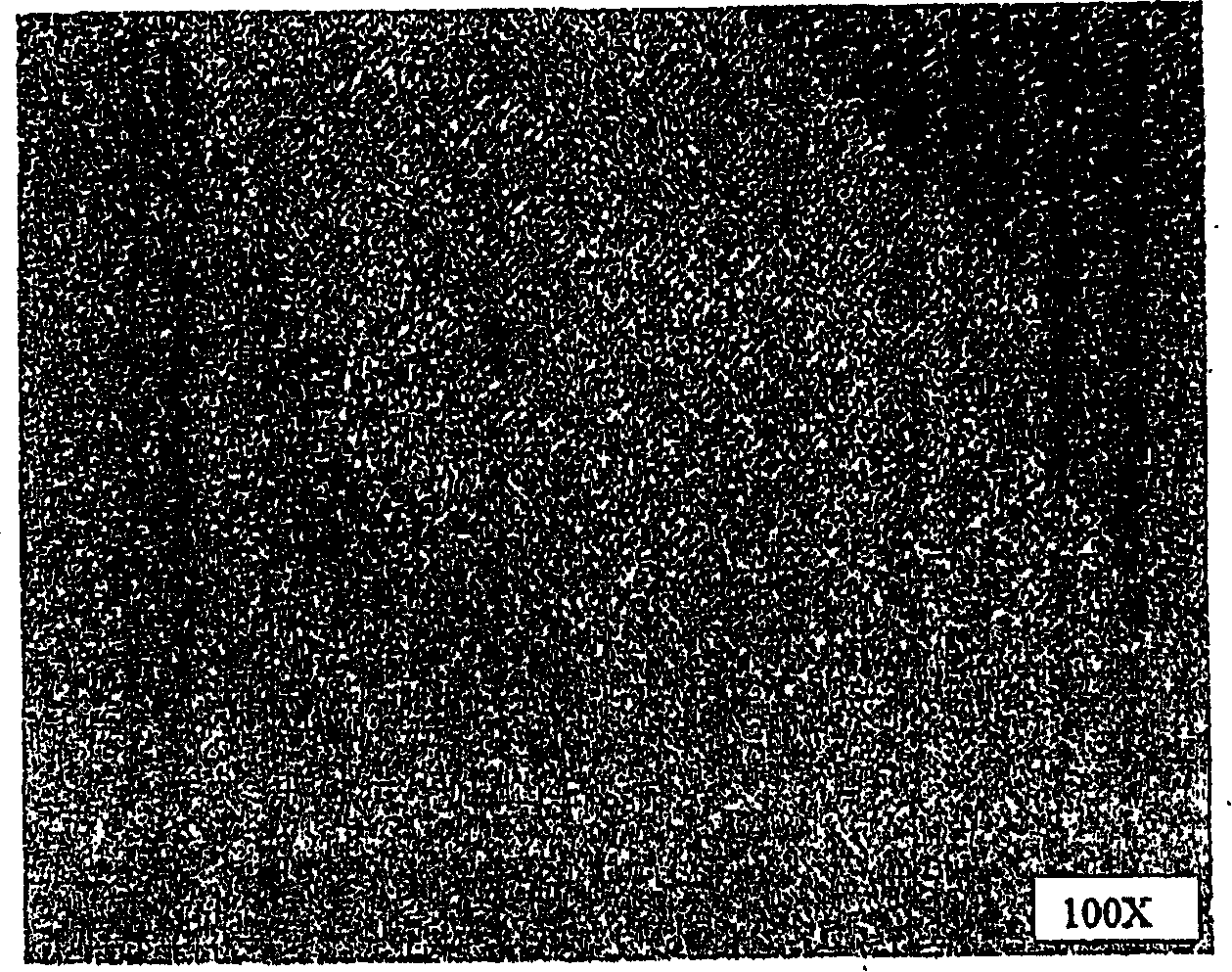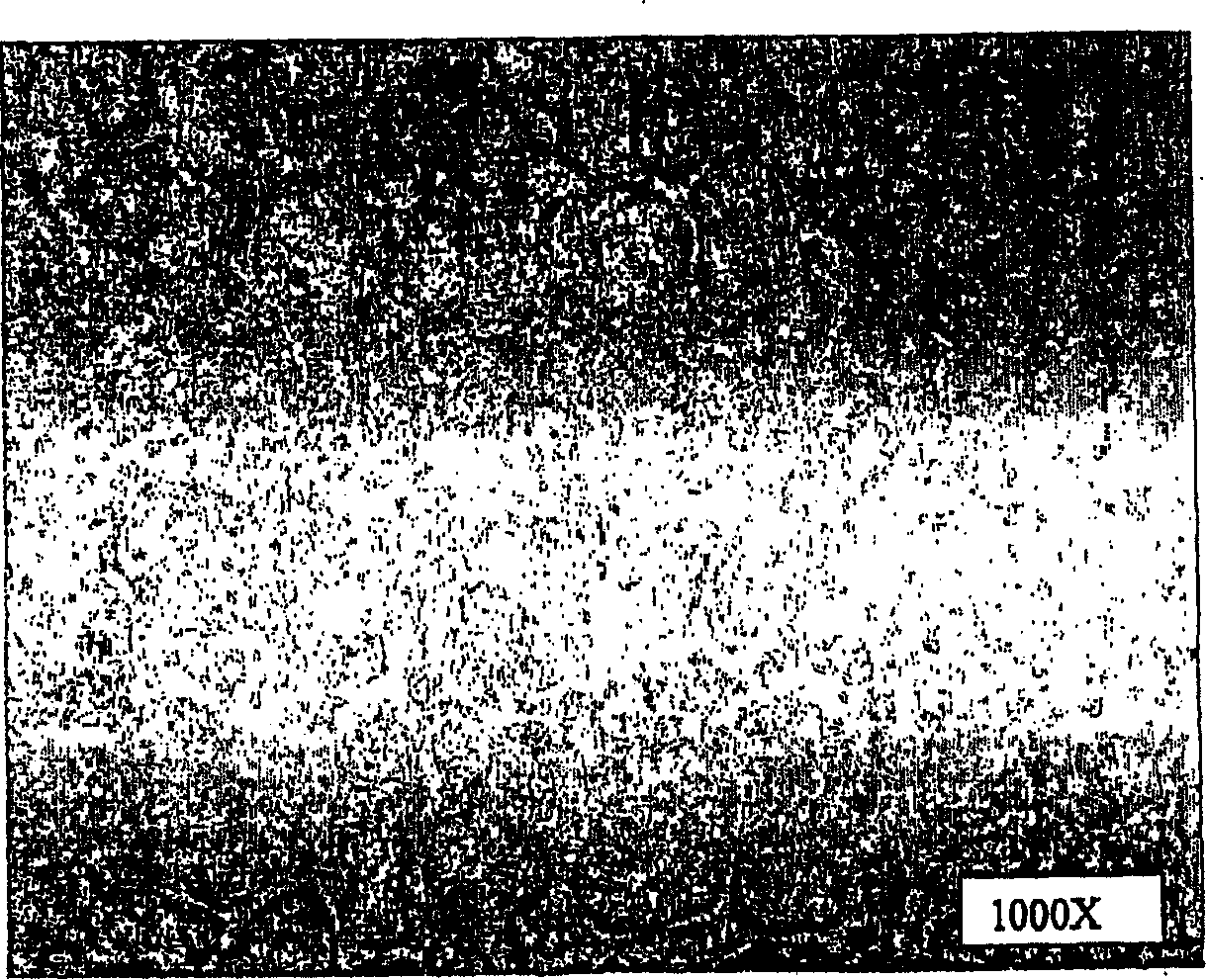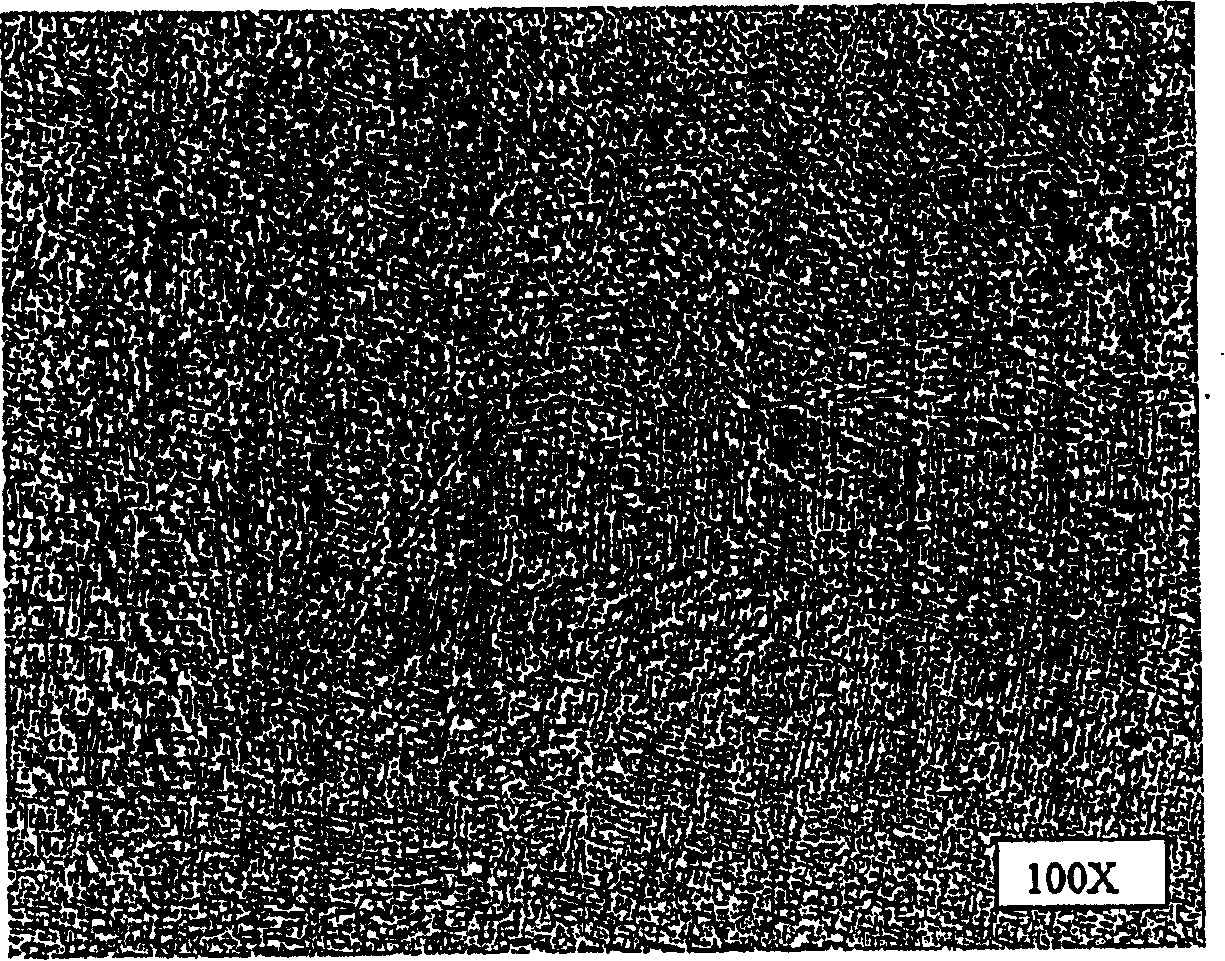Corrosion and wear resistant alloy
An alloy and iron-based alloy technology, applied in the field of high-temperature corrosion-resistant and wear-resistant iron-based alloys, can solve the problems of reduced matrix strength and hardness, accelerated wear deformation, and high price of cobalt-based alloys
- Summary
- Abstract
- Description
- Claims
- Application Information
AI Technical Summary
Problems solved by technology
Method used
Image
Examples
Embodiment
[0050] Alloys having the compositions shown in Table I were cast according to standard casting techniques. The alloy was cast into 50 lbs. per batch (heat). Experimental Heat A was cast at 2882°F. In the hardened and tempered condition, the microstructure of Heat A included martensite and pearlite. Heat A was cast at 1600 Hardened for about 3 hours at °F, quenched in flowing air and tempered for about 3.5 hours at 1200°F. To improve the oxidation resistance of Heat A, a pilot heat was prepared with lower C and Mo content B (cast at 2850°F). Heat B also contained B and Nb to increase hardness after hardening and tempering. To obtain an alloy with better toughness than Heat B, a third alloy was prepared, the present Inventive Heat C (cast at 2850°F). Heat C exhibits improved hardness and improved toughness. Heat C is characterized as a low B, high Cr, high Mo Fe-based alloy. Heat C has excellent castability and can be heat treated at temperatures up to 1850°F in an oxygen-cont...
PUM
| Property | Measurement | Unit |
|---|---|---|
| compressive yield strength | aaaaa | aaaaa |
| dimensional stability | aaaaa | aaaaa |
| compressive yield strength | aaaaa | aaaaa |
Abstract
Description
Claims
Application Information
 Login to View More
Login to View More - R&D
- Intellectual Property
- Life Sciences
- Materials
- Tech Scout
- Unparalleled Data Quality
- Higher Quality Content
- 60% Fewer Hallucinations
Browse by: Latest US Patents, China's latest patents, Technical Efficacy Thesaurus, Application Domain, Technology Topic, Popular Technical Reports.
© 2025 PatSnap. All rights reserved.Legal|Privacy policy|Modern Slavery Act Transparency Statement|Sitemap|About US| Contact US: help@patsnap.com



